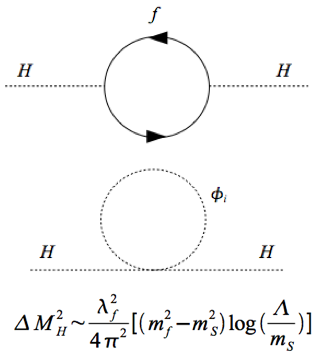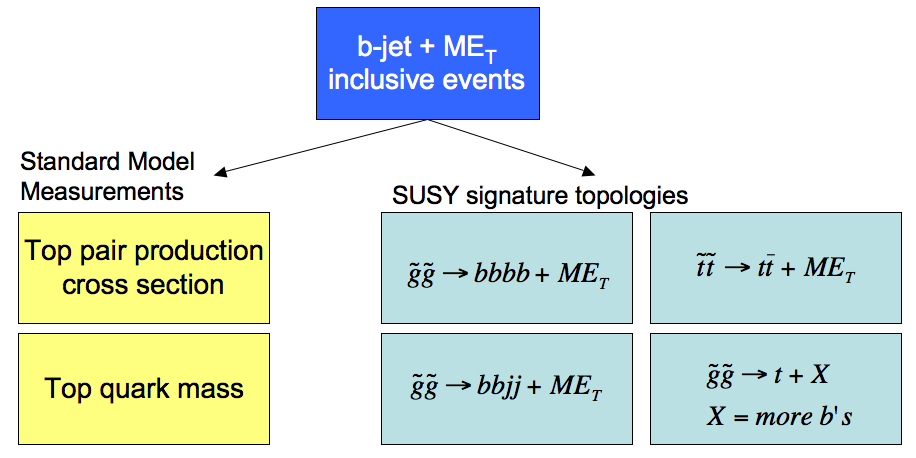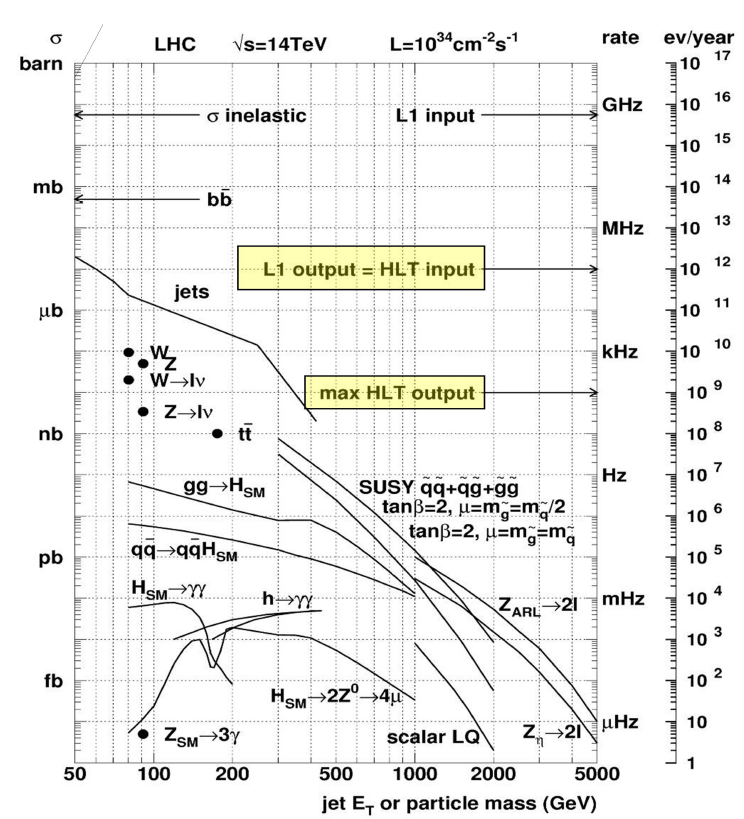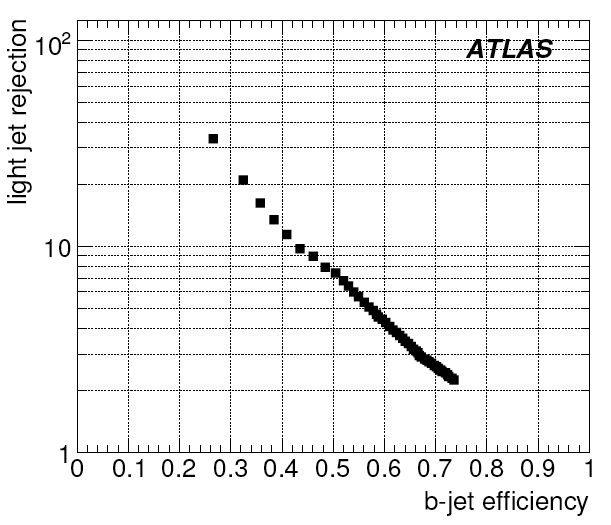...
| Section |
|---|
| Column |
|---|
|
Super-symmetry (SUSY) is one of the most attractive extensions of the Standard Model. It provides solutions to the hierarchy problem and the unification of the gauge forces, and a natural candidate for the dark matter in the Universe.
Squarks and gluinos (super-partners of quarks and gluons), if they exist, will be copiously produced at the LHC via the strong interaction. Squark and gluino production leads to signatures with multi-jets through cascade decays and the neutral LSP, which escapes detection .resulting in large transverse missing energy (missing ET). Hence, Jets+missing ET is the dominant experimental signature for SUSY, with the highest discovery reach. |
| Column |
|---|
|  |
|
While most SUSY searches focus on particular points in the parameter space of SUSY models, our group is developing a broad research program based on physics signatures containing multi-b jets and missing ET in the final state. This includes understanding (and measuring) Standard Model processes and probing SUSY in this final state signature.
The requirement of b-jets in events with large missing ET and multi-jets is well motivated both theoretically and experimentally:
...
The b+MET signature is almost unexplored in ATLAS: b-tag and missing ET are among the most challenging and complex techniques. Expertise in multiple areas is required, which matches well SLAC strengths.
 Image Removed
Image Removed
Experimental challengesThere are several experimental challenges to b+MET analyses:
- Efficient b-tag trigger to afford lower missing ET and jet pT requirements .(to increase the event selection efficiency)
- Jet energy scale and resolution, and the effect of multiple interactions. (much broader scope beyond SUSY searches: SM precision measurements)
- MET Missing ET clean up, calibration, and significance. In particular, in the presence of b-jets in the final state.
- b-tagging:
- b-tag background estimation at high tag multiplicities.
- Estimation of b production from gluon splitting.
- b/c flavor separation.
- high pT b-tagging
Our group is heavily involved in all these areas is making significant contributions to ATLAS reconstruction software and analysis.
An overview of the b+Jet+MET topology-based research can be found in the diagram and links below.
 Image Added
Image Added
Top quark cross section measurement in the missing ET + b-jet channel
...
| Section |
|---|
| Column |
|---|
|  |
| Column |
|---|
|
The LHC will produce collisions at a rate of 40MHz. The purpose of the trigger system is to reduce the output event storage rate to about 300MB/s or approximately 200Hz.
Since most of the collisions at the LHC center of mass energy will result in non-interesting physics events, such QCD multi-jet production, the main task of the trigger system is to reject QCD events while maintaining high efficiency for low cross section processes like Super-symmetry, Higgs, etc.
The ATLAS trigger consists of three levels: Level 1, which is hardware based, and the high level trigger (HLT) which consists of Level 2, and the Event Filter. The HLT is based on software algorithms that analyze region of interests (RoI) identified by the level 1 trigger. The output rates of the three trigger levels are 75KHZ, 2KHz, 200Hz. Tagging b-jets at the trigger level can expand the physics reach of ATLAS in many ways: it allows to lower the jet ET threshold to increase the acceptance of interesting physics events containing multiple b-jets (like bbH and ttH ), and can be used to reduce non-b backgrounds and improve the purity of Super-symmetry searches involving b-jets in the ?nal state.
The SLAC group has implemented one of the two ATLAS b-tagging algorithms at level 2 trigger: the Impact Parameter ?2 Probability tagger (IPChi2) |
|
Current and future work involves the optimization of the operational parameters of the algorithm, determination of performance in real data events, on-line and off-line validation, and the investigation of new trigger menus involving b-quarks and missing transverse energy for Super-symmetry searches.
...
| Section |
|---|
| Column |
|---|
| The IPChi2 tagger is based on the impact parameter distribution of mis-tags, which can be derived directly from data and does not require the use of Monte Carlo templates as in the likelihood ratio b-tagger.
For every region of interest selected by the level 1 trigger, the level 2 b-tagging algorithm uses tracks reconstructed by the level 2 trigger, to determine the probability that the RoI originates form the primary vertex. b-jets are identified by chi2 probability cut. The performance is measured as rejection as a function of efficiency. For instance, for a b-tagging efficiency of 60%, the Level 2 b-tagging algorithm rejection is 4, which means that, on average, only one out of four light quark jets will pass the selection.
link to ATLAS page We are working in the design of different trigger chains (set of trigger signatures and operational points at Level 1, Level 2 and Event Filter) optimized for different physics analyses, in particular all hadronic top, and inclusive jet+MET and b+MET searches. In particular, we are investigating the performance of asymmetric double b-tagging, which consists of requiring one loose and one tight b-tag jets. We have seen that this type of selection improves the rejection (at a same efficiency) compared to the more standard symmetric tagging. link to ATLAS page b+MET combined triggerThe SLAC group has proposed a combined b-jet+MET trigger, to be used in physics signatures containing b-jets and missing ET. The missing ET requirement provides an additional handle to reduce the output rate, while maintaining high efficiency for signal events. We are currently studying the effect of this trigger signature in hadronic top quark final states, and b+MET Super-symmetric events. link to ATLAS page |
| Column |
|---|
|   |
|




